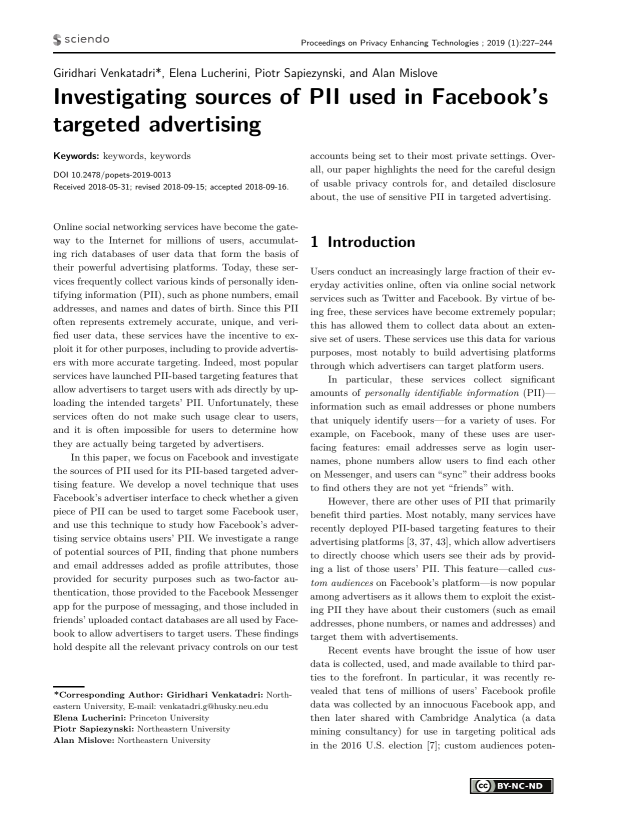Investigating sources of PII used in Facebook’s targeted advertising
Authors: Giridhari Venkatadri (Northeastern University), Elena Lucherini (Princeton University), Piotr Sapiezynski (Northeastern University), Alan Mislove (Northeastern University)
Volume: 2019
Issue: 1
Pages: 227–244
DOI: https://doi.org/10.2478/popets-2019-0013
Abstract: Online social networking services have become the gateway to the Internet for millions of users, accumulating rich databases of user data that form the basis of their powerful advertising platforms. Today, these services frequently collect various kinds of personally identifying information (PII), such as phone numbers, email addresses, and names and dates of birth. Since this PII often represents extremely accurate, unique, and verified user data, these services have the incentive to exploit it for other purposes, including to provide advertisers with more accurate targeting. Indeed, most popular services have launched PII-based targeting features that allow advertisers to target users with ads directly by uploading the intended targets’ PII. Unfortunately, these services often do not make such usage clear to users, and it is often impossible for users to determine how they are actually being targeted by advertisers.
In this paper, we focus on Facebook and investigate the sources of PII used for its PII-based targeted advertising feature. We develop a novel technique that uses Facebook’s advertiser interface to check whether a given piece of PII can be used to target some Facebook user, and use this technique to study how Facebook’s advertising service obtains users’ PII. We investigate a range of potential sources of PII, finding that phone numbers and email addresses added as profile attributes, those provided for security purposes such as two-factor authentication, those provided to the Facebook Messenger app for the purpose of messaging, and those included in friends’ uploaded contact databases are all used by Facebook to allow advertisers to target users. These findings hold despite all the relevant privacy controls on our test accounts being set to their most private settings. Overall, our paper highlights the need for the careful design of usable privacy controls for, and detailed disclosure about, the use of sensitive PII in targeted advertising.
Copyright in PoPETs articles are held by their authors. This article is published under a Creative Commons Attribution-NonCommercial-NoDerivs 3.0 license.

